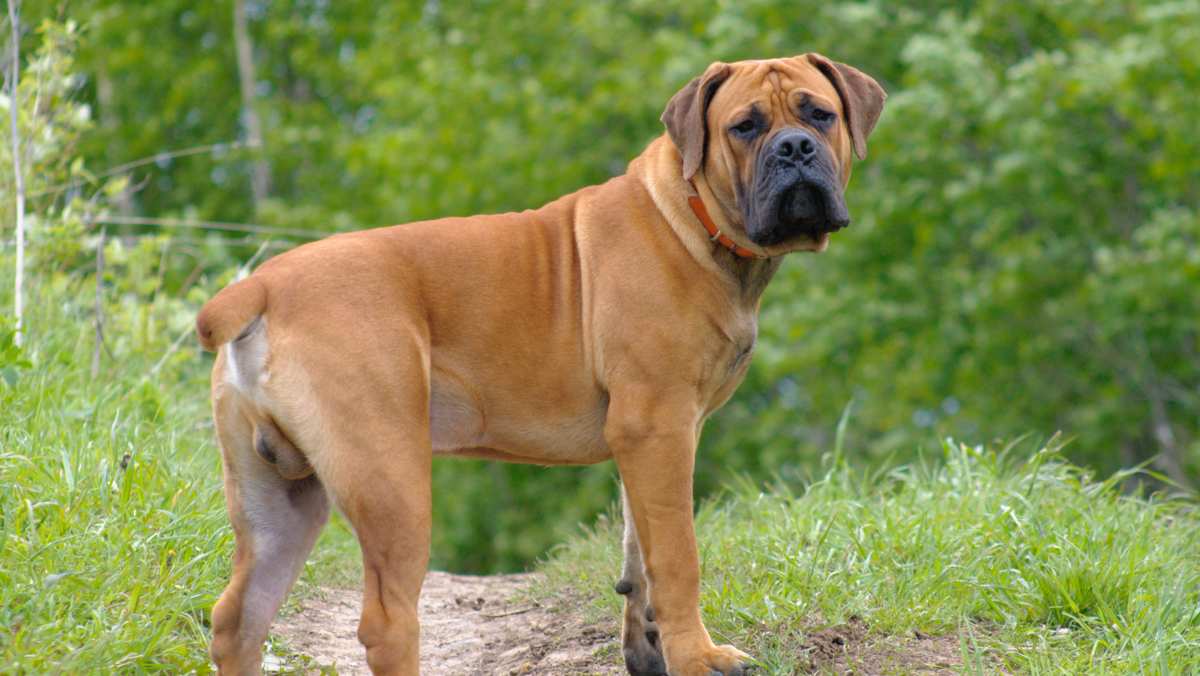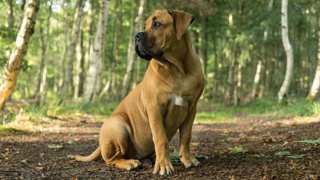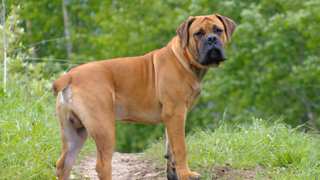Boerboel Breed Details
The Boerboel is a South African breed that gained notoriety for it's massive size and superb guardianship abilities. Some may wonder if these dogs are inherently dangerous while others maintain that any dog is as good as the person that raises it. Boerboel attacks do happen whether they are protecting their owner or simply as a product of bad treatment (or mismanagement)-- this is a powerful breed that must be well trained, socialized and supervised. Also, you should check to see if your country will even allow you to own one of these dogs as the importation and/or ownership is banned in 10+ countries! If trained, socialized and loved, this breed will be an affectionate, devoted member of your family and will stick by your side like your shadow. They are best suited to those with large homes and yards, and you must have plenty of time to spend with them each day! Consider the following Boerboel facts:
PROS
- Affectionate playmate for your children
- Gets along with other pets if well socialized
- Easy grooming of the short coat
- Not difficult to train for an experienced owner
- Can live indoors or out
- Not a barker unless necessary
- Good exercise partner
- A+ protector for you and your household
- Can be trained as a hunting companion
CONS
- May be overly protective (and aggressive) towards strangers and dogs
- Must always be kept on leash when not in an enclosed area
- Not hypoallergenic, sheds regularly
- Not ideal for small apartments or homes without yards
- May become destructive if left alone regularly for long periods
- Only recommended for experienced, confident owners
- May not be legal to own in your country


